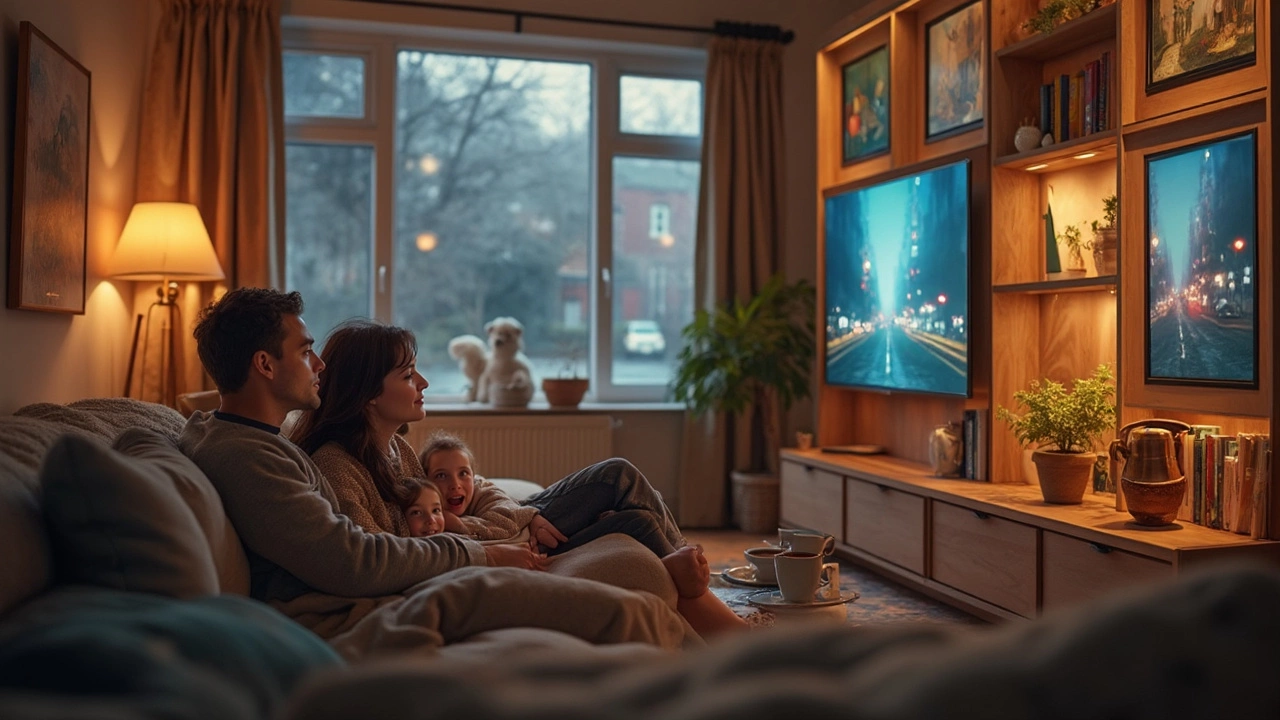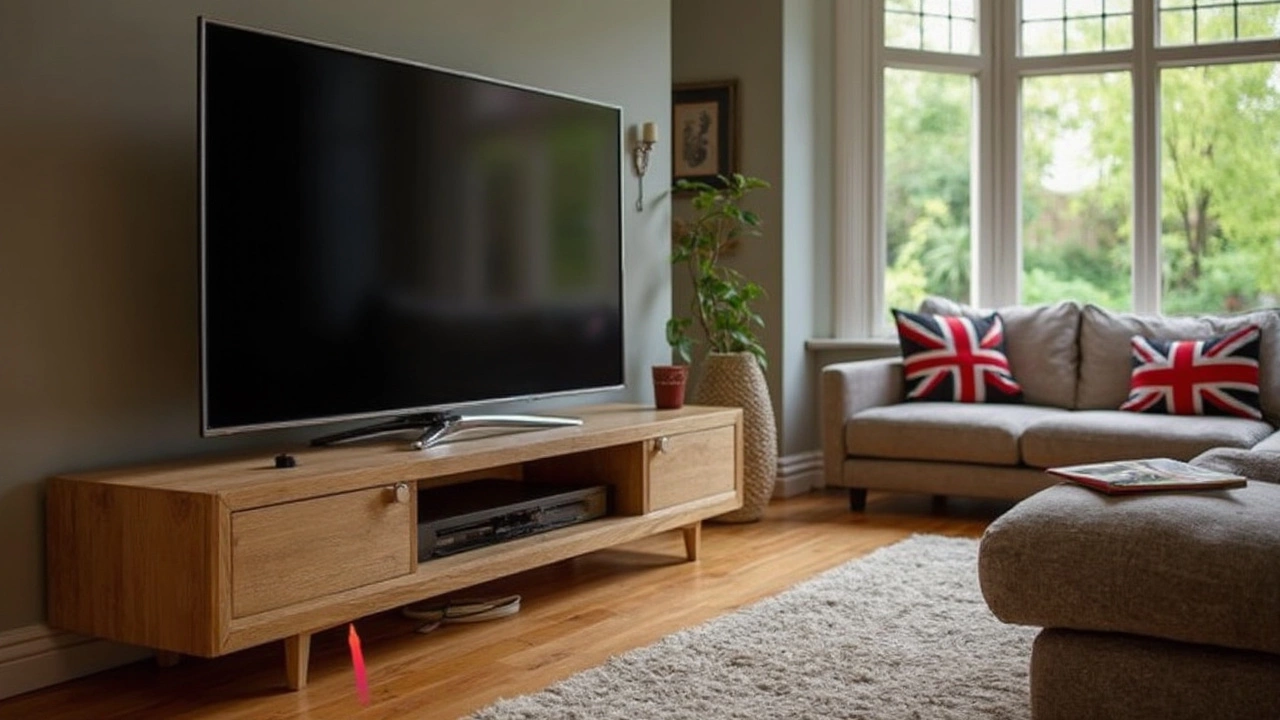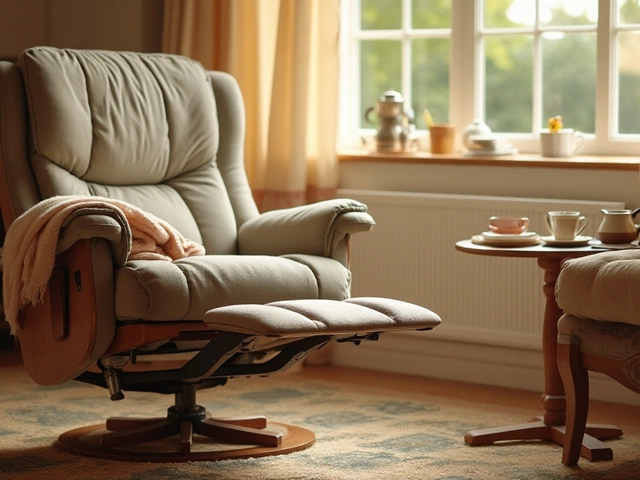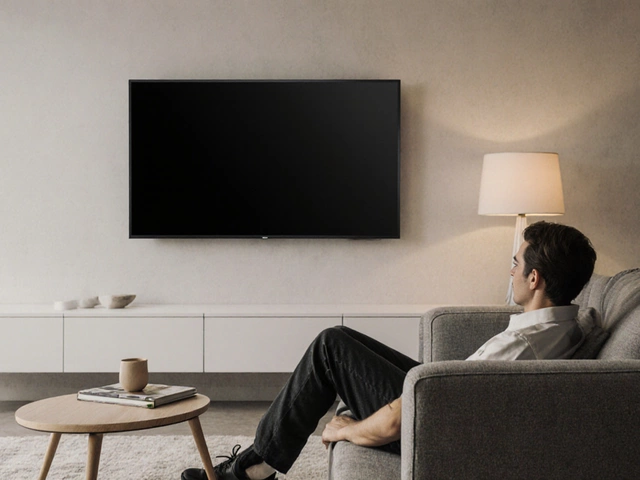65‑inch TV: How to Choose, Mount, and Fit It Perfectly
Thinking about a 65‑inch screen? It’s big enough to feel cinematic, but not so huge that it overwhelms most rooms. The key is to blend size, placement, and furniture so the TV looks intentional, not an after‑thought.
First up, viewing distance. For a 65‑inch model, sit about 8‑10 feet away to get a clear picture without eye strain. If your couch is closer, you might notice pixel‑grid lines; farther and you lose the immersive feel. Measure your space, then compare it to the recommended range – it’s a simple step that makes a world of difference.
Wall Mount Basics
Mounting the TV saves floor space and gives a sleek look. Check the VESA pattern on the back of the screen; it tells you which bracket fits. In the UK, use a stud finder to locate wall studs – a solid anchor prevents wobble and protects your wall. If your wall is plasterboard only, invest in a rail system that spreads the weight across several studs.
When you decide on height, line the centre of the screen with your eye level when you’re seated. That usually means the screen’s middle sits around 42‑44 inches from the floor, but adjust for tall sofas or recliners. Also, tilt‑adjustable mounts let you fine‑tune the angle for glare‑free viewing.
Choosing the Right TV Stand
Prefer a stand? Pick one that matches the TV’s width and can hold its weight – most manufacturers list the maximum load. A good stand sits about 25‑30 inches high, which aligns well with eye level for most seating. Look for models with cable management holes; they hide power cords and HDMI cables for a tidy setup.
Storage is another perk. Many stands include shelves or drawers for media players, game consoles, or décor. If you have a small room, a low‑profile console keeps the floor spacious while still offering storage.
Lighting matters too. Position the TV away from direct windows to avoid reflections. If you can’t avoid bright sunlight, use sheer curtains or an anti‑glare screen protector. Soft ambient lighting behind the TV – a bias light – reduces eye strain and adds a modern vibe.
Sound is often overlooked. Built‑in speakers on a 65‑inch set are fine for casual watching, but for a real home‑theater feel, add a soundbar or bookshelf speakers. Keep them at ear height and point them toward the listening area for clear dialogue.
Cable management can look messy without a plan. Route cords through the wall if you’re comfortable with a small drill job, or use zip ties and cord covers that blend with the wall colour. The goal is a clean line from the TV to the power outlet and any external devices.
Now think about sofa placement. Ideally, the couch sits centered with the TV, leaving about 2‑3 feet of wall space on each side for side tables or décor. If your room is narrow, angle the sofa slightly toward the screen to maintain a comfortable viewing angle.
Budget‑wise, don’t get fooled by flashy price tags. A solid mid‑range 65‑inch TV paired with a simple wall mount or stand often outperforms an overpriced model that offers features you won’t use. Look for sales during UK big‑deal days and compare reviews for reliability.
Bottom line: measure your space, choose the right mounting method, match the height to your eye level, manage cables, and blend the TV with your existing furniture. Follow these steps, and your 65‑inch screen will feel like a natural part of the room rather than a clunky add‑on.




